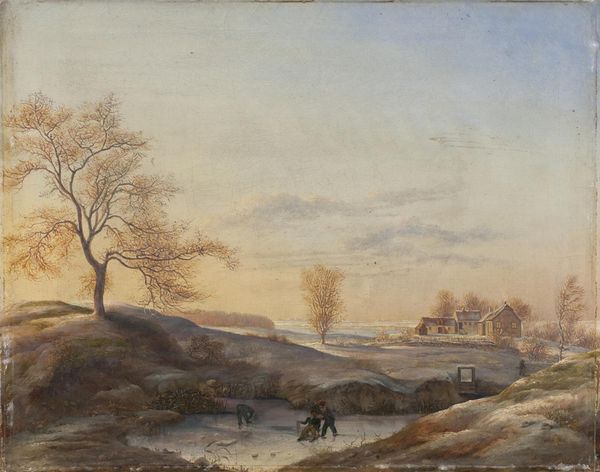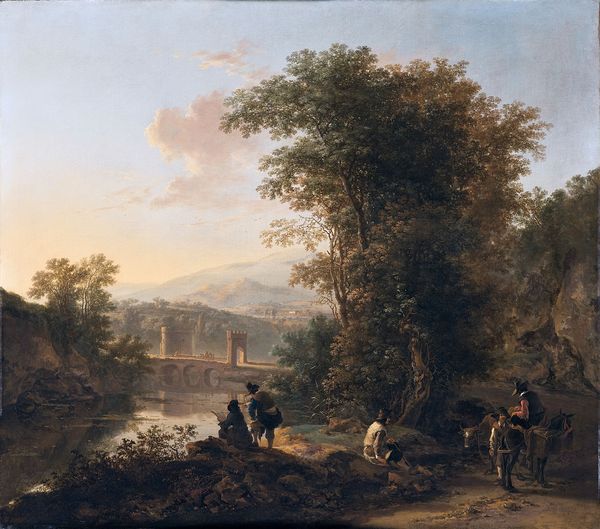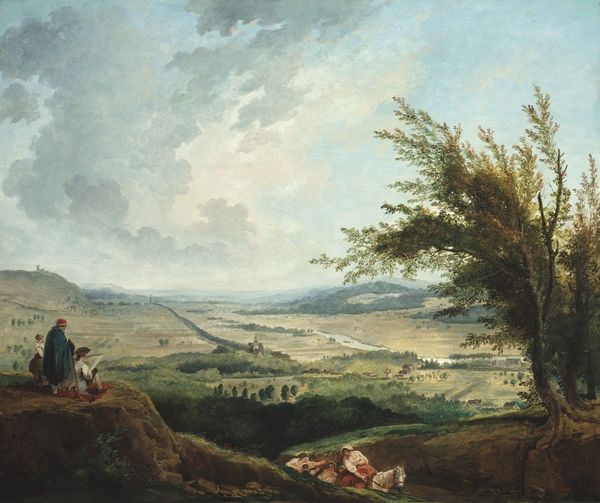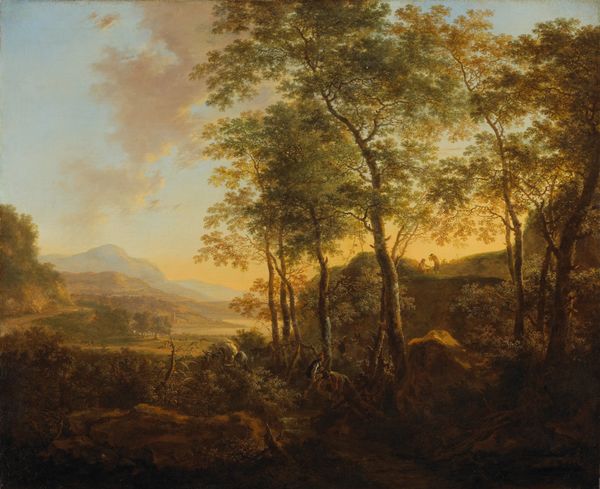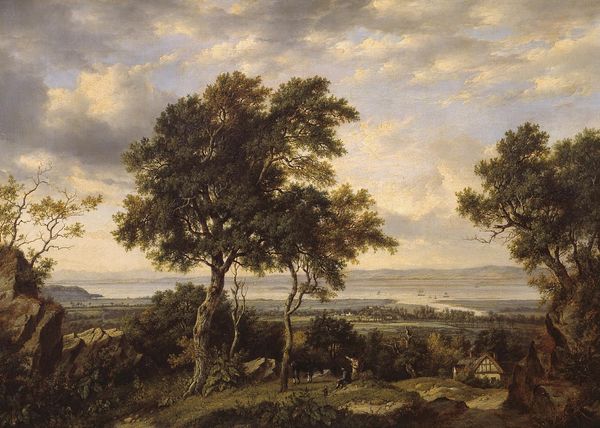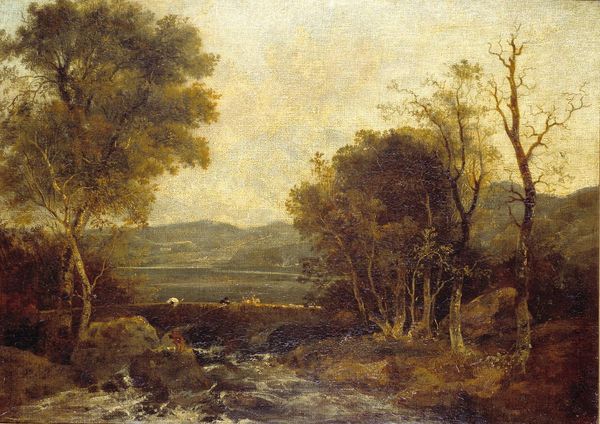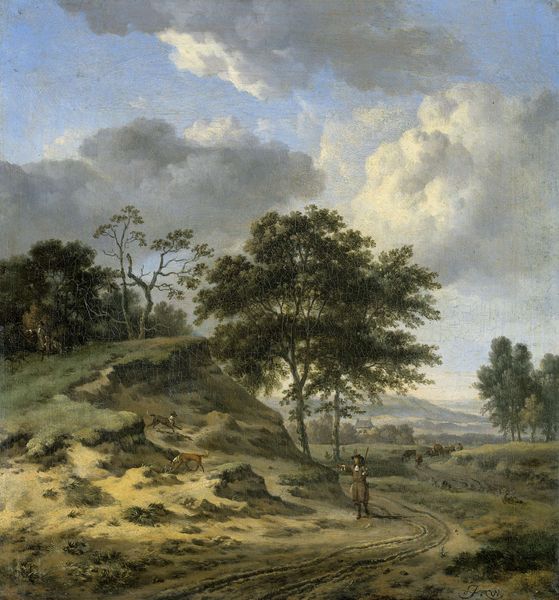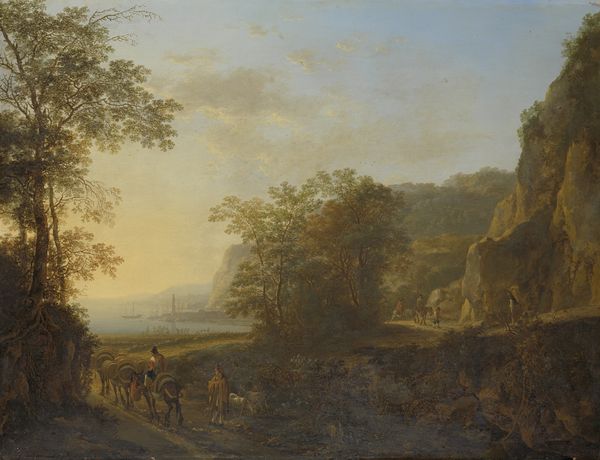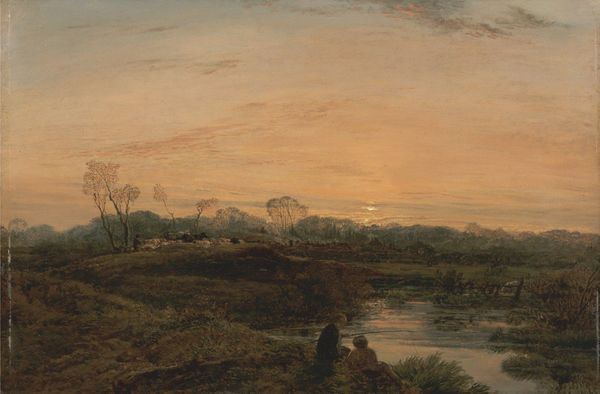
oil-paint
#
dutch-golden-age
#
oil-paint
#
landscape
#
oil painting
#
genre-painting
#
mixed media
Dimensions: height 23.5 cm, width 29.5 cm
Copyright: Rijks Museum: Open Domain
Editor: This is "Hilly Landscape with a Rider on a Country Road" by Jan Wijnants, painted sometime between 1655 and 1684. It's an oil painting and has a lovely, expansive feel to it. The light is just beautiful. What strikes you when you look at it? Curator: Immediately, I note the deliberate construction of space through light and shadow. Consider how Wijnants manipulates aerial perspective: the crisp foreground gradually dissolving into the hazy distance. It’s a carefully orchestrated visual recession. Do you perceive how the large tree on the left acts as a repoussoir, framing the broader vista? Editor: Yes, it's like a curtain being pulled back! So, the tree isn't just *there*, it's guiding your eye. Curator: Precisely. And observe the diagonal thrust of the road; it bifurcates the composition, creating a dynamic tension between the near and far. The rider, seemingly insignificant in scale, provides a crucial focal point. He invites the viewer to mentally traverse this meticulously rendered space. Notice how the textures – the rough impasto of the foreground vegetation contrasting with the smooth, almost translucent sky – add to the painting’s inherent dynamism. Editor: So, it's less about the *story* of the rider and more about how all these elements—the road, the light, the texture—fit together to create a visual experience? Curator: Indeed. The painting's true subject is the orchestration of pictorial space. It's about how line, color, and texture function as discrete formal elements in order to achieve a balanced, harmonious whole. What did you learn about looking at the painting? Editor: I realized how much the composition dictates your experience, and how carefully placed the elements are! Curator: And I remembered how easy it is to overlook pure formalism when narrative seems more engaging.
Comments
No comments
Be the first to comment and join the conversation on the ultimate creative platform.
